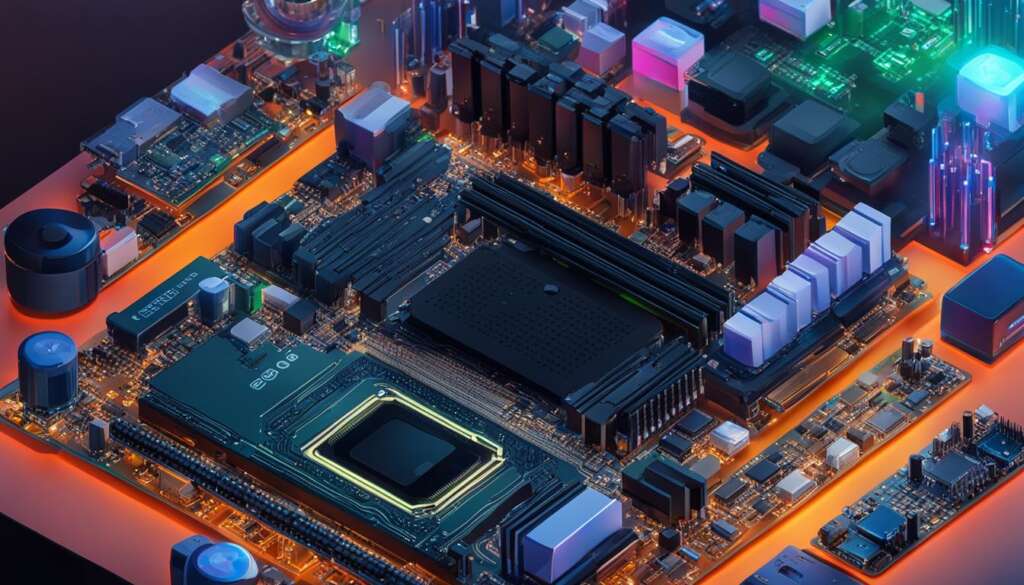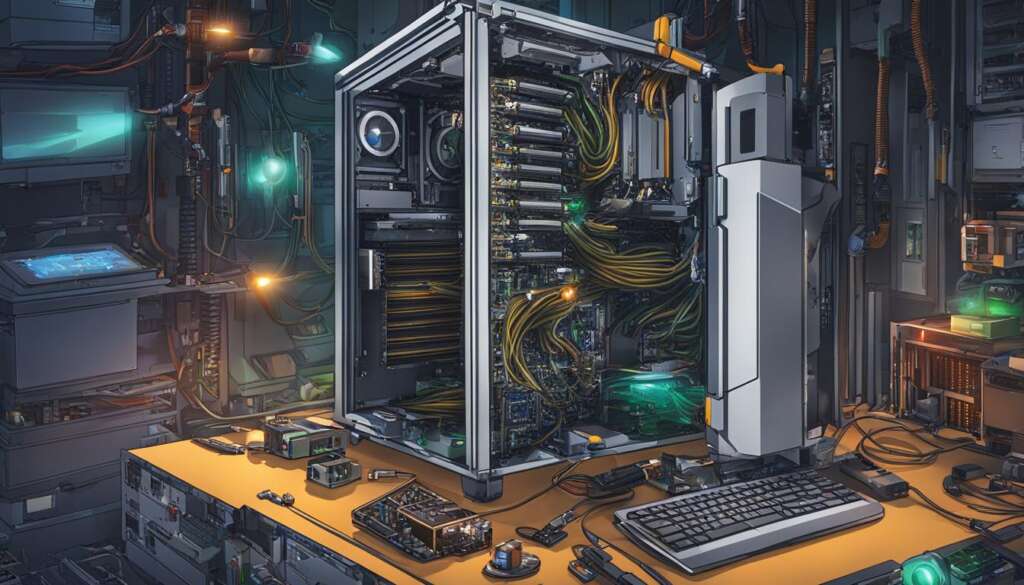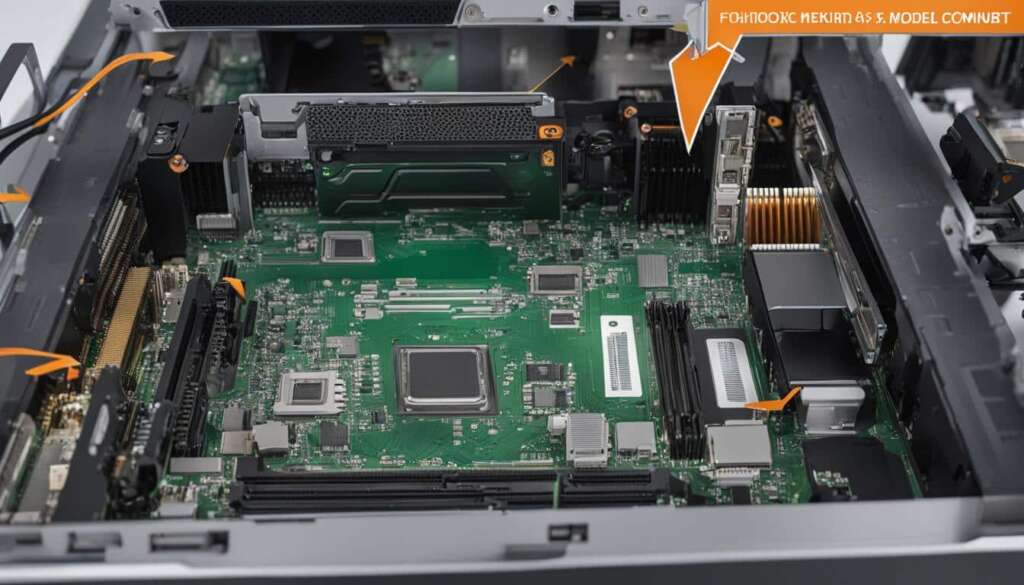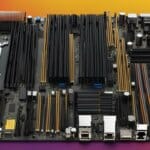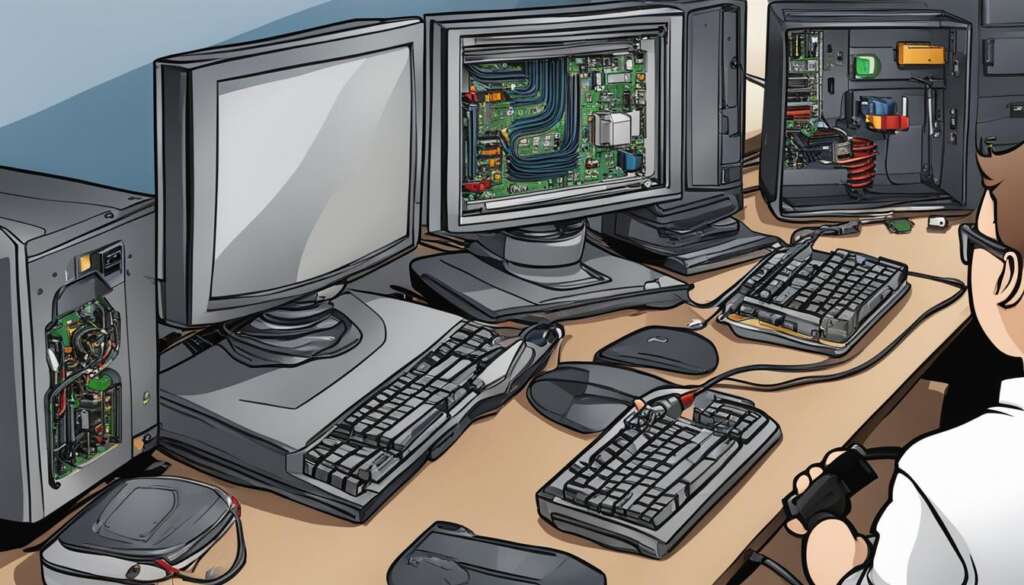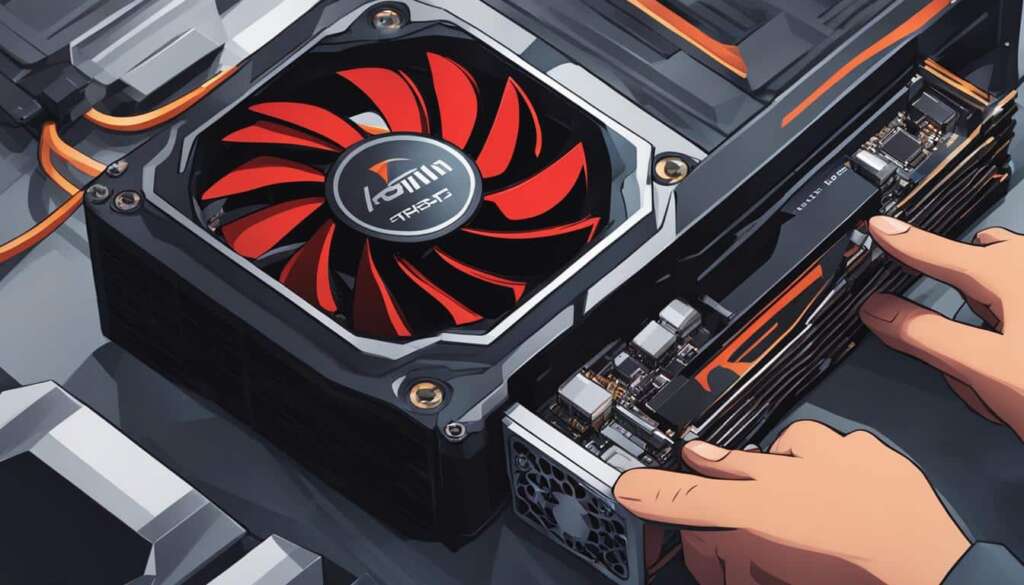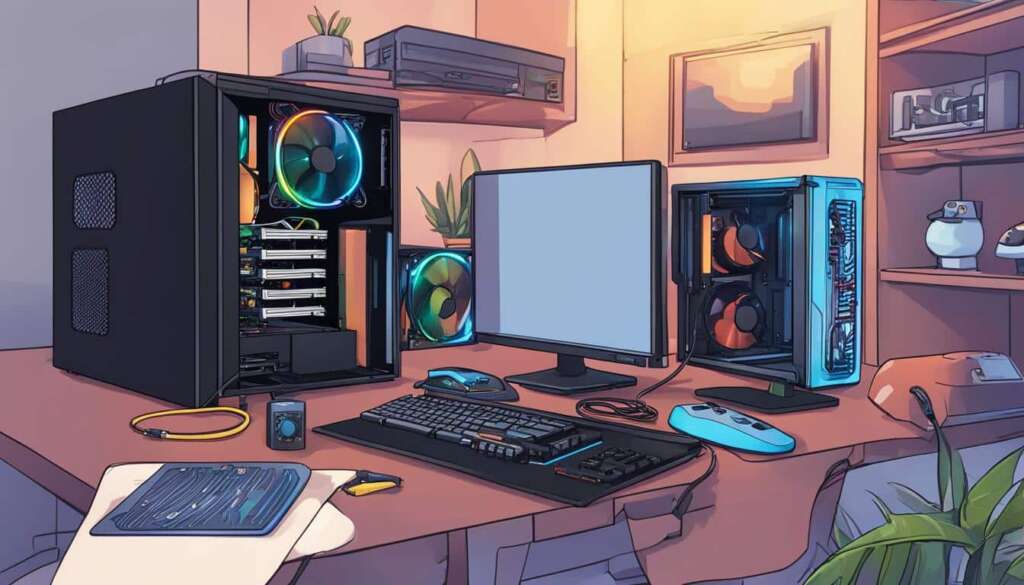Table of Contents
Welcome to our informative article on the BIOS storage location in a PC. Whether you’re a tech enthusiast or just curious about the inner workings of your computer, understanding where the BIOS is stored and how it functions is essential. In this section, we will delve into the details of the BIOS storage location and its significance in relation to PC components and firmware storage.
When it comes to the BIOS in a PC, it is stored on a non-volatile ROM chip located on the motherboard. The fascinating aspect of modern computer systems is that the BIOS contents are now stored on a flash memory chip. This advancement allows for easy upgrading and rewriting without the need to remove the chip from the motherboard.
Similar to a flash drive, the flash memory chip used for BIOS storage is a type of EEPROM (electrically erasable and programmable read-only memory). Its non-volatile nature ensures that the contents are retained even when the power is cut off. This is crucial as it enables the BIOS software to be continually updated to add new features and fix bugs.
While the BIOS software is stored on the flash memory chip, it is important to note that the BIOS settings are stored separately in the CMOS (complementary metal-oxide-semiconductor) chip. This chip is kept powered up by a small battery located on the motherboard, ensuring that your BIOS settings are preserved even when the computer is turned off.
The BIOS storage location in a PC plays a vital role in the overall functionality of the system. Understanding its location and the components involved is key to effectively managing your computer’s firmware storage. In the next section, we will explore how the BIOS functions and its role in the boot process.
How Does BIOS Work?
The BIOS (Basic Input/Output System) in a PC has several important functions that enable the boot process and facilitate the interaction between hardware and software. Understanding how BIOS works is crucial for troubleshooting and optimizing your computer.
1. Power-On Self-Test (POST)
The first function of BIOS is to perform a power-on self-test (POST). During this process, the BIOS checks the hardware components of the computer to ensure they are functioning properly. Any issues or errors detected are reported through beep codes or error messages.
2. Bootstrap Loader
The bootstrap loader is responsible for locating and loading the operating system into the computer’s memory. It searches for the operating system’s boot sector, which contains the necessary instructions to initiate the boot process.
3. Software/Drivers
Another important function of BIOS is to locate and initialize the necessary software and drivers that interface with the operating system. This includes device drivers for the hardware components, as well as firmware updates and configurations.
4. CMOS Setup
The CMOS (Complementary Metal-Oxide-Semiconductor) setup is a configuration program that allows users to alter hardware and system settings stored in the CMOS chip. This includes settings for the CPU, memory, storage devices, and more. Users can access the CMOS setup by pressing a specific key during the boot process.
When a computer is turned on, the microprocessor passes control to the BIOS program, which is stored on an erasable programmable read-only memory (EPROM) chip. The BIOS then initiates the boot process by performing the POST, locating and loading the operating system, initializing the necessary software and drivers, and allowing users to modify hardware and system settings through the CMOS setup.
“Understanding how BIOS works is crucial for troubleshooting and optimizing your computer.”
Overall, the BIOS plays a vital role in the boot process and system configuration. By understanding its functions, users can effectively manage their computer’s firmware and ensure smooth operation.
History and Future of BIOS
The history of BIOS dates back to 1975 when the term was first coined. Since then, BIOS has played a vital role in the functioning of computers. However, with the advancements in technology, the popularity of BIOS has waned over time.
In 2017, Intel made an important announcement regarding the retirement of support for legacy BIOS systems by 2020, in favor of the Unified Extensible Firmware Interface (UEFI). UEFI is a newer technology that offers superior performance and enhanced capabilities compared to traditional BIOS.
Although BIOS was initially developed by IBM, other companies such as Phoenix Technologies have also created their own versions. Today, many motherboard manufacturers produce boards with BIOS chips, making it crucial for users to regularly update their BIOS and chipset drivers for optimal performance and security.
| BIOS History | UEFI | Legacy Systems |
|---|---|---|
| Coined in 1975 | Replaces Legacy BIOS | Retired by Intel in 2020 |
| Integral part of computers | Improved performance | Replacing with UEFI |
| Owned by IBM | Enhanced capabilities | Important for updating BIOS |
| Optimal performance and security |
Accessing and Managing BIOS
Accessing and configuring the BIOS is a crucial step in maintaining and optimizing your computer’s performance. While the process may vary depending on the computer you are using, it typically involves resetting or powering off the computer and entering the BIOS Setup Utility.
To enter the BIOS Setup Utility, look for a message during the boot process that prompts you to press a specific key, such as “Press [key] to enter BIOS setup.” Once inside the BIOS Setup Utility, you can access a range of configuration tasks, including changing hardware settings, managing memory settings, adjusting the boot order or boot device, and resetting the BIOS password.
Proper management of BIOS security is also crucial to protect your computer from potential threats. By keeping the BIOS and chipset drivers up to date, you can safeguard your system against vulnerabilities and prevent hackers from executing malicious code on your operating system.
FAQ
Where is the BIOS stored in a PC?
The BIOS in a PC is stored on a non-volatile ROM chip on the motherboard. In modern computer systems, the BIOS contents are stored on a flash memory chip, which allows for easy upgrading and rewriting without removing the chip from the motherboard.
What functions does the BIOS perform in a PC?
The BIOS in a PC has four main functions: power-on self-test (POST), bootstrap loader, software/drivers, and CMOS setup. The POST tests the hardware of the computer before loading the operating system. The bootstrap loader locates the operating system. Software/drivers locate the necessary software and drivers that interface with the operating system. The CMOS setup is a configuration program that allows users to alter hardware and system settings.
What is the difference between BIOS and UEFI?
The term BIOS was first coined in 1975 and became an integral part of computers. However, with the advent of Unified Extensible Firmware Interface (UEFI), BIOS has lost popularity. UEFI is a newer technology that offers improved performance and enhanced capabilities over traditional BIOS.
How can I access and manage the BIOS?
Users can access and configure the BIOS through the BIOS Setup Utility. The process may vary depending on the computer being used, but typically, users need to reset or power off the computer and then look for a message that indicates how to enter system configuration. Once in the BIOS Setup Utility, users can change hardware settings, manage memory settings, change the boot order or boot device, and perform other configuration tasks.

